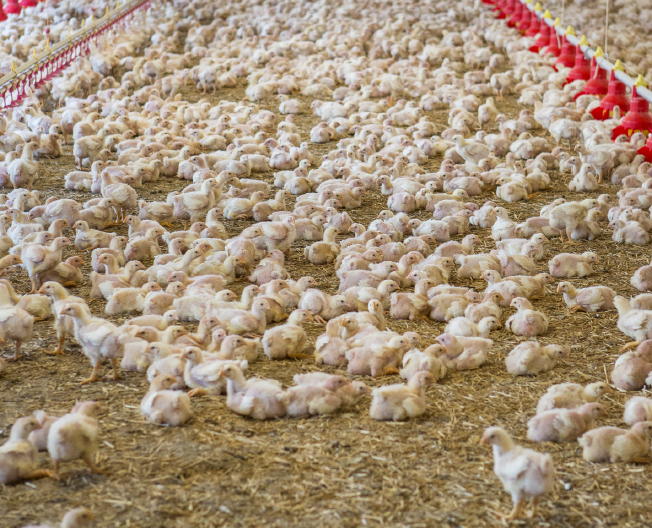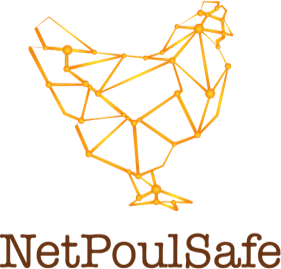
This is the first of a series of technical articles on biosecurity in poultry farming produced within the European project “NetPoulSafe – Networking European poultry actors for enhancing the compliance of Biosecurity measures for a sustainable production (G.A. 101000728). NetPoulSafe is a thematic network of the European Union with the aim of identifying the best measures to support biosecurity and to stimulate the exchange of knowledge between the various actors in the European poultry sector (France, Spain, Italy, Hungary, Belgium, the Netherlands and Poland). Professor Alessandra Piccirillo and Dr Giuditta Tilli, University of Padua, collaborated on the project representing Italy.
In these articles (3), different issues (principles of biosecurity, new legislation on biosecurity, biosecurity in breeder farms and hatcheries) related to the implementation of biosecurity measures in the context of national poultry farming will be addressed.
For more information: www.netpoulsafe.eu
On the website you will find more information on the project as well as the dissemination materials (podcasts, videos, factsheets, online courses, handbook on supporting measures, etc.) produced within the project. Contents are available in the languages of the countries involved.
Biosecurity is the set of practices to be implemented in poultry farms to prevent the introduction and spread of infectious diseases. Therefore, biosecurity is a powerful tool for protecting animal health and welfare, as well as food safety. The aim of this article (created within the framework of the “NetPoulSafe – G.A. 101000728” project) is to explain in a simple way the importance of biosecurity in the management of infectious diseases.
The term biosecurity refers to the set of all measures designed and implemented in order to prevent the entry (bioexclusion) and spread (biocontainment) of pathogens within and between farms. Nowadays, biosecurity represents one of the most important tools available for farmers to create, within the production environment, optimal hygienic conditions, capable of protecting animal health and welfare and providing guarantees on food safety by preventing the occurrence of food-borne zoonotic agents in the farm.
Biosecurity therefore represents a key management tool, as well as an essential part, of any successful poultry production system. The onset of diseases in poultry, often caused by negligence or poor management of the farm, reduces productivity, profitability and the long-term financial sustainability of any production sector.
Pathogens capable of affecting and seriously damaging the poultry supply chain are mainly viruses, bacteria, fungi and protozoa; they all possess the ability to cause diseases, which produce significant problems in farms, including the reduction of the productive performance of the animals. To give some examples, viral agents are responsible for diseases such as Newcastle disease, Gumboro disease and Avian Influenza; bacteria are responsible for diseases such as Avian Cholera, Colibacillosis and Salmonellosis; fungi cause problems of Aspergillosis, mould and mycotoxins; protozoa cause, among others, serious coccidiosis problems. All these pathogens, together with lice and mites, represent a huge threat for poultry farming.
How can these harmful microorganisms, dangerous for the production and economic success of the farm, enter?
The identification of the potential routes through which a pathogen can be introduced into the farm represents the first fundamental step to be taken. Producers and operators should pay attention to this, in order to carry out a correct risk assessment, necessary for the implementation of an appropriate biosecurity program in the farm.
The main routes of entry and spread of pathogens are represented by:
• airborne transmission;
• transmission through consumption of contaminated feed and/or water;
• direct transmission from sick, domestic or wild animals to healthy animals;
• indirect transmission through contaminated equipment, materials and vehicles, or through live vectors, mainly represented by pests, such as rodents, insects, but also by staff and/or occasional visitors who do not wear dedicated clothing in the farm area.
The entry routes that microorganisms can use, as well as the paths they can follow to spread throughout the production, are therefore multiple. Hence, the need for every prudent farmer to adopt efficient, robust practices in order to prevent the introduction and circulation of pathogens, thus protecting both the animals and the productivity of the farm.
 What are the necessary biosecurity procedures to implement to protect the production?
What are the necessary biosecurity procedures to implement to protect the production?
The procedures to be implemented are located at different levels. The construction of physical and conceptual barriers is the necessary basis for the implementation of an effective biosecurity plan on the farm. Usually, the plan is made of three pillars: separation and control of personnel and vehicle’s traffic to/ from the farm, cleaning and disinfection of the facilities and equipment.
Poultry farms should be designed in order to prevent the entry of other animals, both domestic and wild, and to limit the access to unauthorized people in the areas adjacent to the houses (fences, nets on the windows). Specifically, the houses should be built in order to prevent access to birds and rodents: all possible entrances should be sealed or covered with metal mesh, which integrity should be periodically checked. Particular attention should be paid to areas of greater risk, such as air inlets, extractors, drains, windows, etc. Rodents, for example, are well known vectors of serious poultry pathogens such as Salmonella Typhimurium, Campylobacter, Escherichia coli, Staphylococcus aureus, Pasteurella etc. and thus their entry should be limited as much as possible according to strict biosecurity practices, including their control.
Insects control is also part of a good biosecurity plan; for example, due to their external hair cover, flies are able to transport Salmonella Enteritidis, Campylobacter jejuni, Enterococcus faecium and other bacteria both inside and outside the farm, including those resistant to antimicrobials. A similar role can be attributed to the mite (Alphitobius diaperinus) and the red mite (Dermanyssus gallinae) which are both widely present in long-living animals’ farms. Insects are also able to maintain infections between one cycle and the following if not correctly controlled, as their lifespan is longer than the period of sanitary break, especially in mild climates areas.
Control of staff and occasional visitors is also of primary importance: those responsible for the animals daily care, veterinarians, truck drivers, external crews, farm workers, etc. represent one of the most important factors in the transmission of diseases within and towards flocks: visits should therefore be reduced to a minimum and allowed only when strictly necessary and carefully controlled. Important biosecurity measures are thus represented, among others, by fencing the farm perimeter, with a single access gate, kept always closed, and with “no access” signs, aimed at making aware unauthorized personnel.
 For authorized personnel and/or occasional visitors, at every passage between the ‘dirty area’ (outside the house) and the ‘clean area’ (inside the house), washing and disinfecting at least hands and shoes, as well as changing footwear and clothing in a dedicated room should be compulsory. Vehicles entering the farm should also be disinfected. It is important to underline that, within the area surrounding the farm, only vehicles whose access is essential for farm activities should be allowed; all the other vehicles should be parked outside the farm perimeter.
For authorized personnel and/or occasional visitors, at every passage between the ‘dirty area’ (outside the house) and the ‘clean area’ (inside the house), washing and disinfecting at least hands and shoes, as well as changing footwear and clothing in a dedicated room should be compulsory. Vehicles entering the farm should also be disinfected. It is important to underline that, within the area surrounding the farm, only vehicles whose access is essential for farm activities should be allowed; all the other vehicles should be parked outside the farm perimeter.
Other important procedural barriers to prevent the spread of pathogens on farms are represented by effective cleaning and disinfection of all facilities and equipment, following the complete removal of all organic material, at the end of each production cycle and before repopulation of the farm: the objective is to reduce the load of pathogens present in the environment and, consequently, to minimize the risk of the occurrence of health problems in the following cycle. To apply a correct cleaning and disinfection plan is fundamental, especially if there have been cases of salmonellosis, as it is able to survive in the litter for several months. Feeders, drinkers and water distribution lines should also be included in these plans. It is also necessary to periodically clean and disinfect the feed silos, since minor salmonellae, entering the house through feed, can stay for long periods, as well as mycotoxins if there is feed left between one cycle and the following one. In order to have effective results from these practices, it is necessary that all materials have precise requirements, such as easiness of washing, cleansing and disinfection. Finally, it is important to underline that, to implement an effective and successful biosecurity program, all measures should be simple, understandable, acknowledged, usable, through specific indications placed in various areas of the farm, by all the poultry workers and regularly monitored.
 All these aspects are crucial in poultry farms and, for this reason, require great attention: indeed, it should always be remembered that diseases significantly increase production costs and losses, leaving the farmer with little or no profit and representing a potential risk to public health.
All these aspects are crucial in poultry farms and, for this reason, require great attention: indeed, it should always be remembered that diseases significantly increase production costs and losses, leaving the farmer with little or no profit and representing a potential risk to public health.
















